Caution to all readers: This post is laden with heavy irony, and is not meant to be taken without the necessary grain of salt. It could make you smile or laugh (hopefully), get you to shake your head in disbelief (more probably), or enrage you at the sheer madness of it (let's try to keep calm though). The only firm fact in this entire piece is, that I am not trying to choose either interpretation over another, only introduce ideas that others have done before me (mostly). It's up to you to do your own research, think what you want, and ideally respect everyone else for doing the same, even if they adopt the opposite viewpoint.
My First Time in Leipzig
I have never been to the city of Leipzig until last weekend, when I had the chance to visit a couple of friends, some old, some more recent, and others who I met for the first time. It was a very lovely, relaxed couple of days, while the Summer was blasting its full heat down on us. What a convenient circumstance to blame for my desire to visit the Altes Rathaus (= old town hall), precisely to look at its cellar windows.
Suppressed History of the Great Mud Flood
Have you ever heard of the Great Mud Flood, which covered the entire earth around 2-300 years ago, burying everything under a 2-3 meter (6-9 feet) deep layer of dirt, and at the same time causing the demise of a world-spanning peaceful global civilization? Most probably you haven't, since this is not being taught in any history classes. Which means, it's clearly suppressed information, by whoever does not want you to know about it. Fortunately, the Internet is full of intrepid truth seekers, who take it upon themselves to lay this knowledge down for you. I'm not going to include any links, as I see them to be spoilers of the journey down the rabbit hole.
Leipzig as Prime Example to the Mud Flood
One of the most frequently cited structures supporting this theory is the old town hall of Leipzig, that appears to have lost an entire floor! So I was understandably eager to see what my own two eyes would reveal. First, let's look at an image from 1593, which is used as evidence. The nice thing is that it was never meant to highlight the building, but instead the decapitation of adherents of the Calvinist persuasion by Lutheran protestants. You can read about it on Wikipedia.

So how many levels can we see? On ground level (1.) there are some pretty arcades, above which you have a floor (2.) of windows. Next up you see another level (3.) of windows, which is also on the level of the tower balcony. Further upstairs, there is another level (4.), with four windows being located under each stepped gable. Above the level with the four windows, the same gables continue with a level (5.) of two windows each. Further up still there is only the attic level (6.) directly under the roof.
Now let's compare this with the pic I took myself:
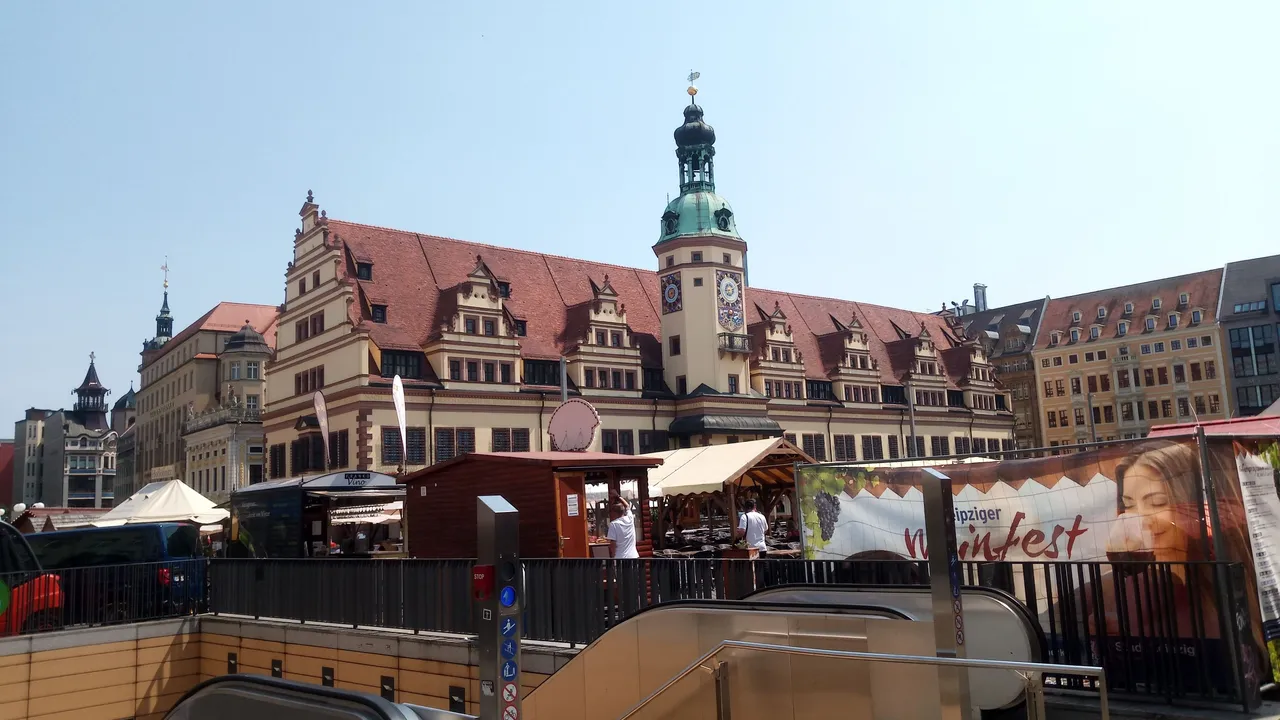
Okay, so moving from top down, it looks like the building is the same: attic level, two-window-in-stepped-gable-level (the windows on the side facade help distinguishing the levels), four-window-in-stepped-gable-level, below which follows the floor with the large windows, on the same level as the balcony on the tower part. So far so good. The rest is covered by the wine-fest on the market square. What a bummer... I guess now we'll never know the truth!
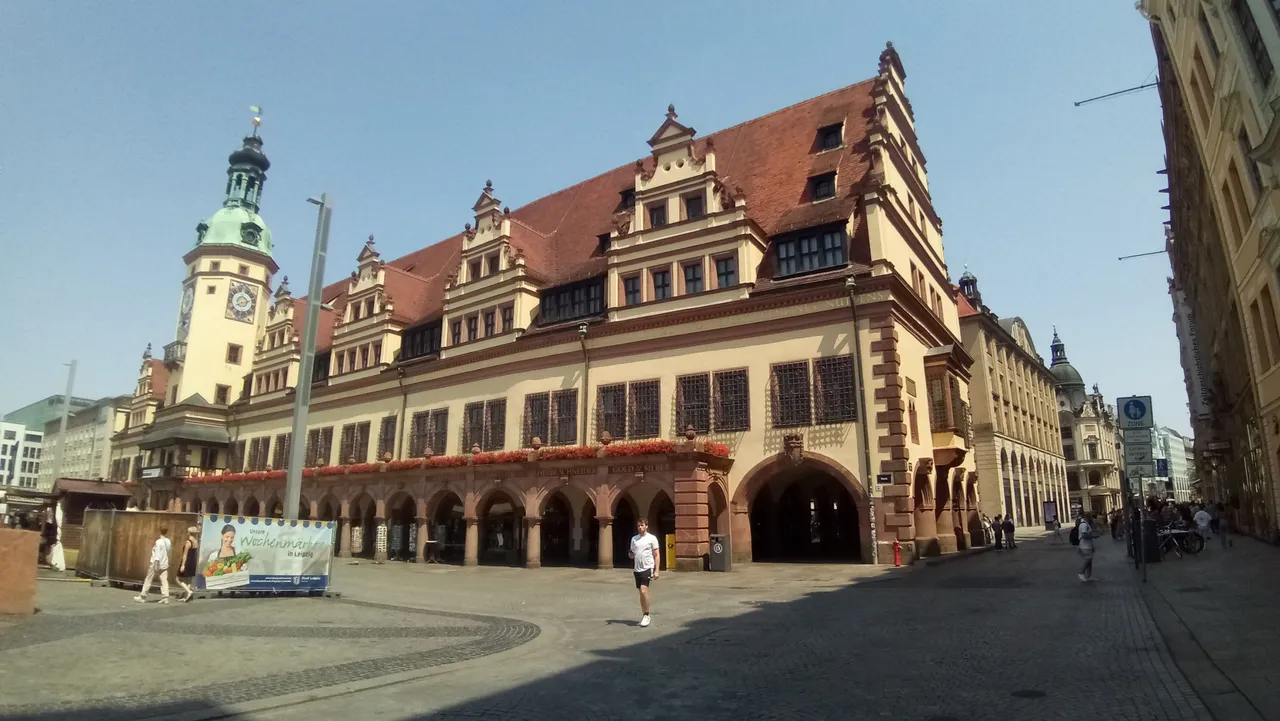
Luckily, I felt adventurous enough to go around the market square, and there it struck me: What do we have here? Under the level with the big windows, right where the balcony is under the tower, ... there is only the ground floor with the pretty arcades! Any explanation? Hmmm... It may have something to do with that huge entrance under the tower, spanning two storeys.
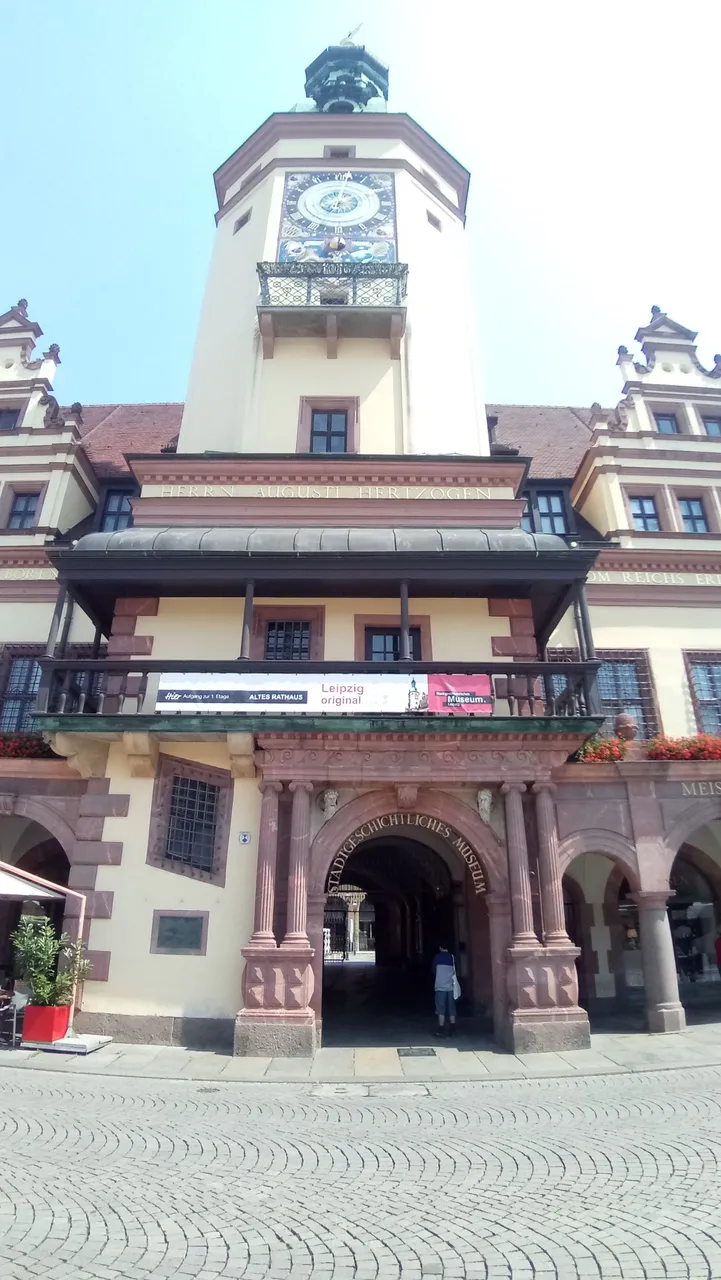
Oh, is it THIS entrance? It certainly does NOT reach up to the second level, but just like in the image from 1593, it goes up to just under the balcony. This means, that the entryway, which even today seems disproportionally oversized, must have been even taller originally. This begs the valid question: for what purpose did they need to make the gate so enormous??? Oh yeah, and where did the ground floor go, (or alternatively the floor above it)? So let's take a look at another historical picture from 1672:
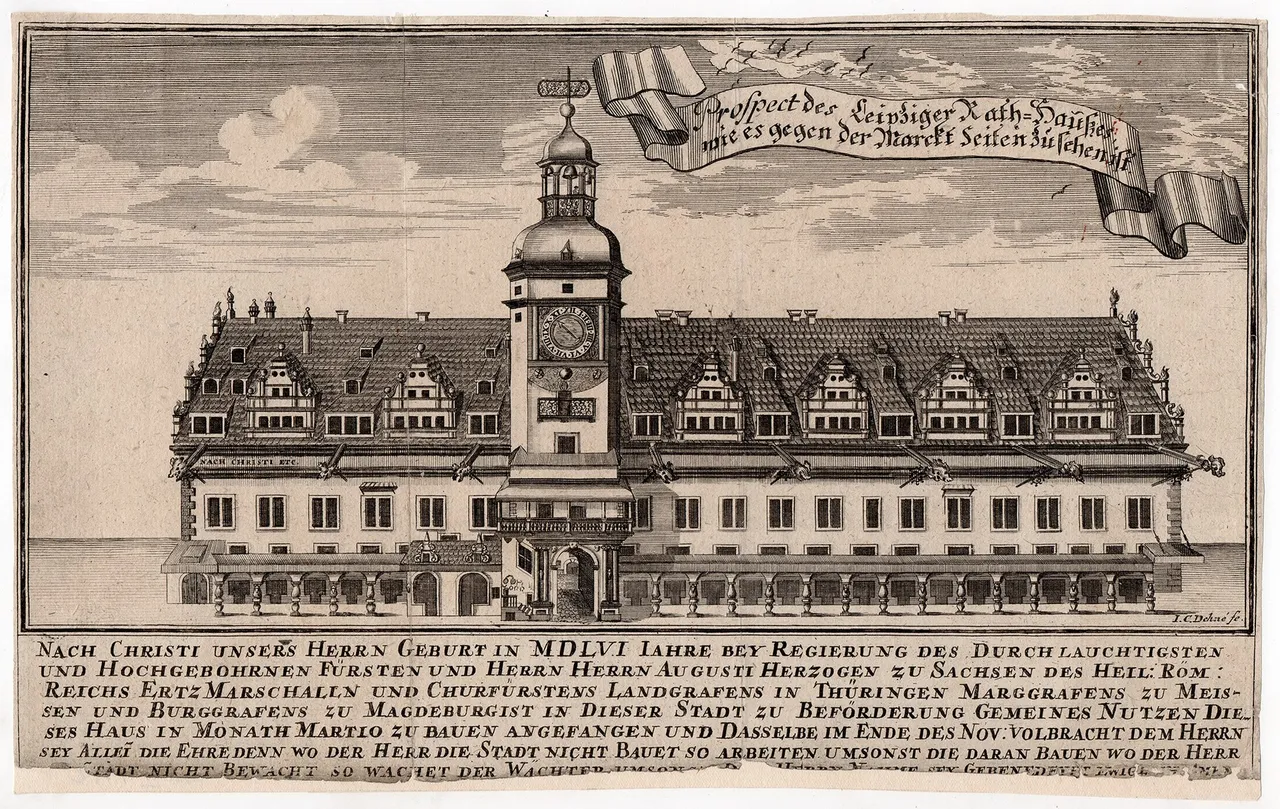
The two lowest floors reveal some curious properties. I don't know about you, but it seems to me as if the ground level was partially buried underground. And the floor above it? It looks way too small to be an entire floor. What's going on here? Are we witnessing the gradual disappearance of the first upper floor? Did the building eat up its upstairs level to compensate for its loss downstairs? Normally buildings don't do that, but what do I know?
Other Suspicious Observations
Adherents of the Mud Flood Theory will nod their heads right now, as they know where this discourse is leading. However, once again, I want to spare you the spoilers, and let you do your own exploration, if you are inclined to follow up on this. At the same time, let me show you some other interesting features I have found in this admittedly photogenic German city.
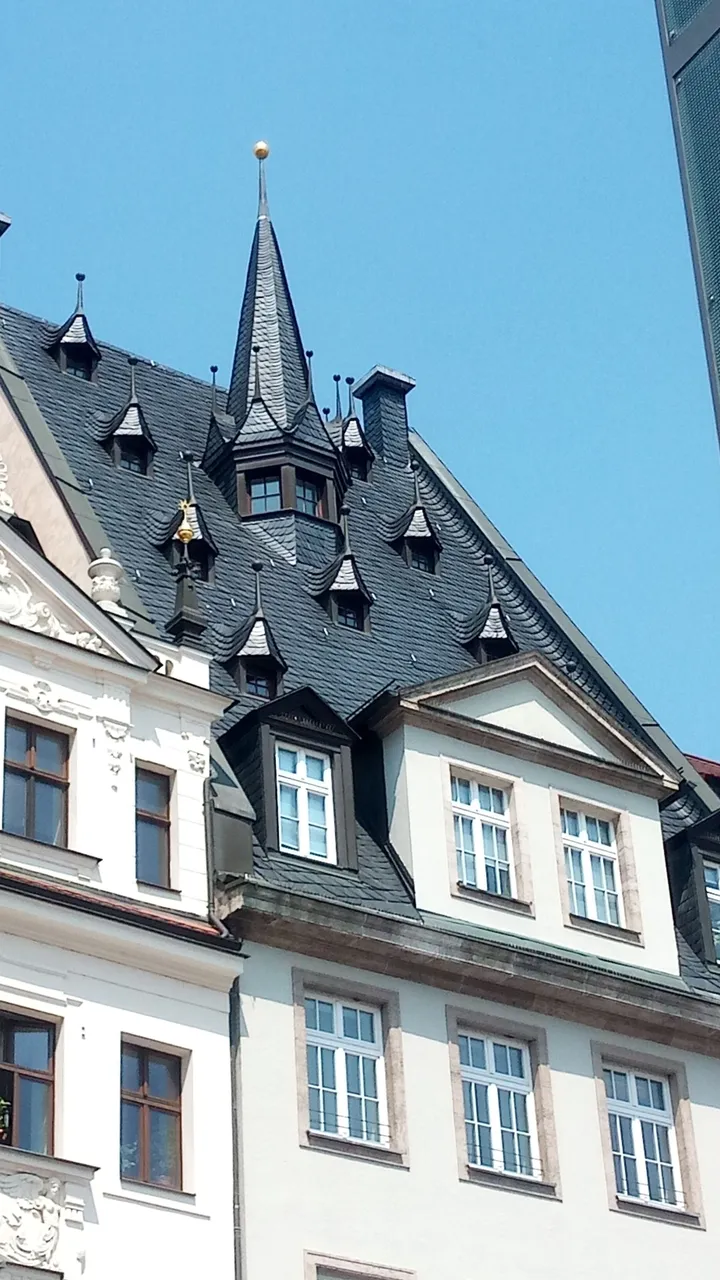
The house with these partially covered towers is adjacent to the same market square. What I find quite noteworthy, is how the nine little towers are seemingly growing out of the roof. Or could it be the other way round and the roof grew up and around those towers? The tenth tower is the only one tall enough to deserve that name, but all around its windows it is sprouting yet more tiny tower-tops. Could this have been the mother tower, spawning several tiny towers, before they were all taken over by the roof? In either case, I wonder why they ever stopped growing...
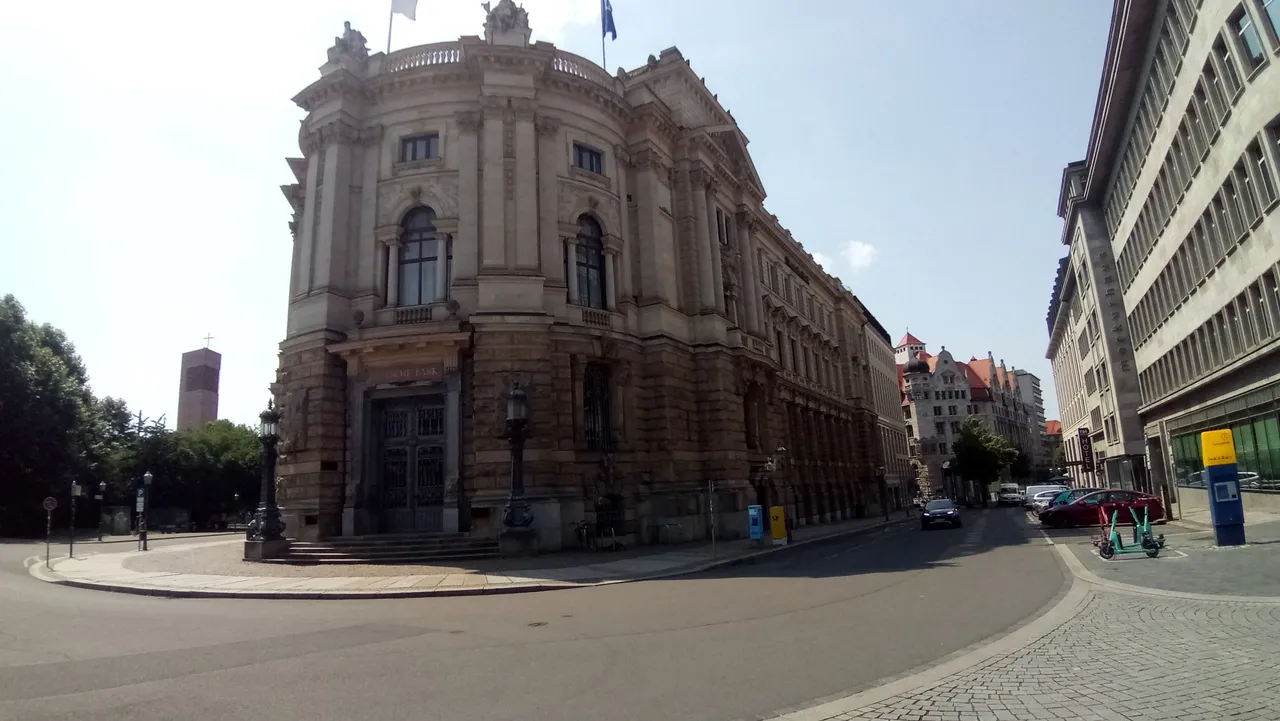
This other building, where the Deutsche Bank is located today, is only a few blocks from the town hall, and its entrance is also quite noteworthy: You need to go up a few stairs to enter (as would be expected from such an impressive building).
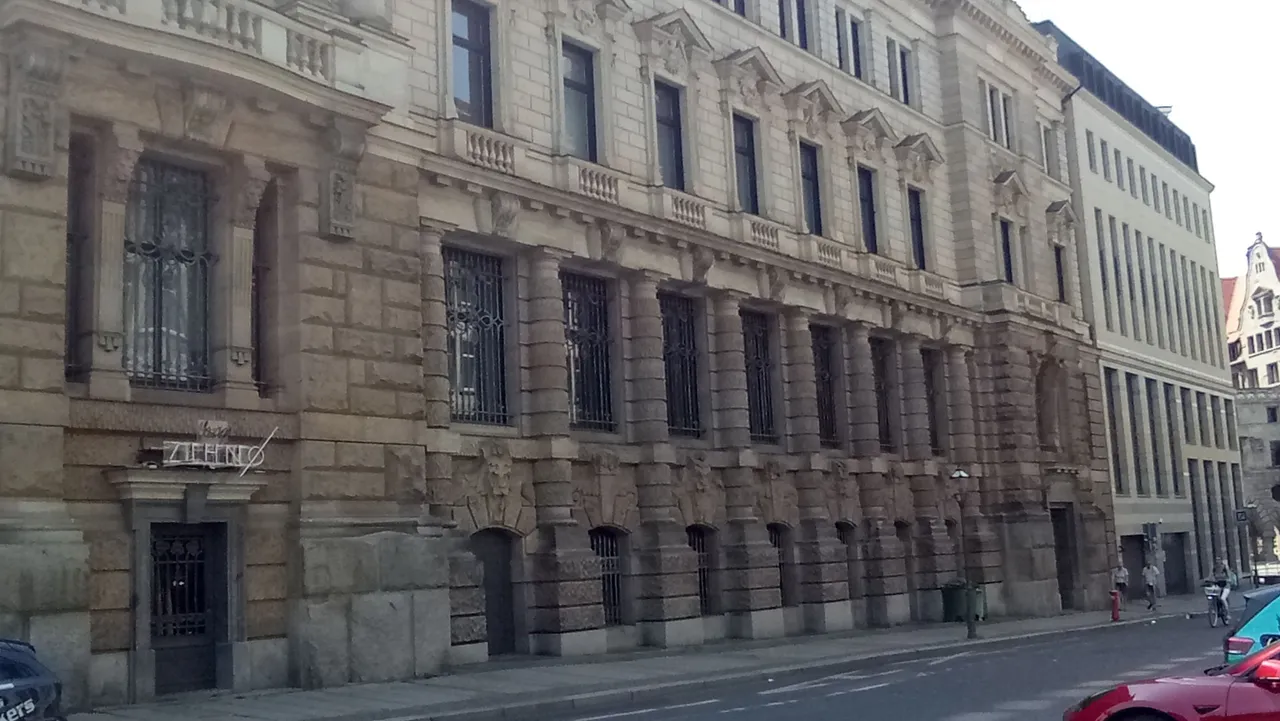
And this is the side of the same building. Notice the small side-door, leading downstairs into the floor below the entry level floor! While it may be understandable to create an access way to the basement even from the outside, this basement seems to be pretty large for an underground level. The cellar windows are tall enough to be the ground level floor - almost.
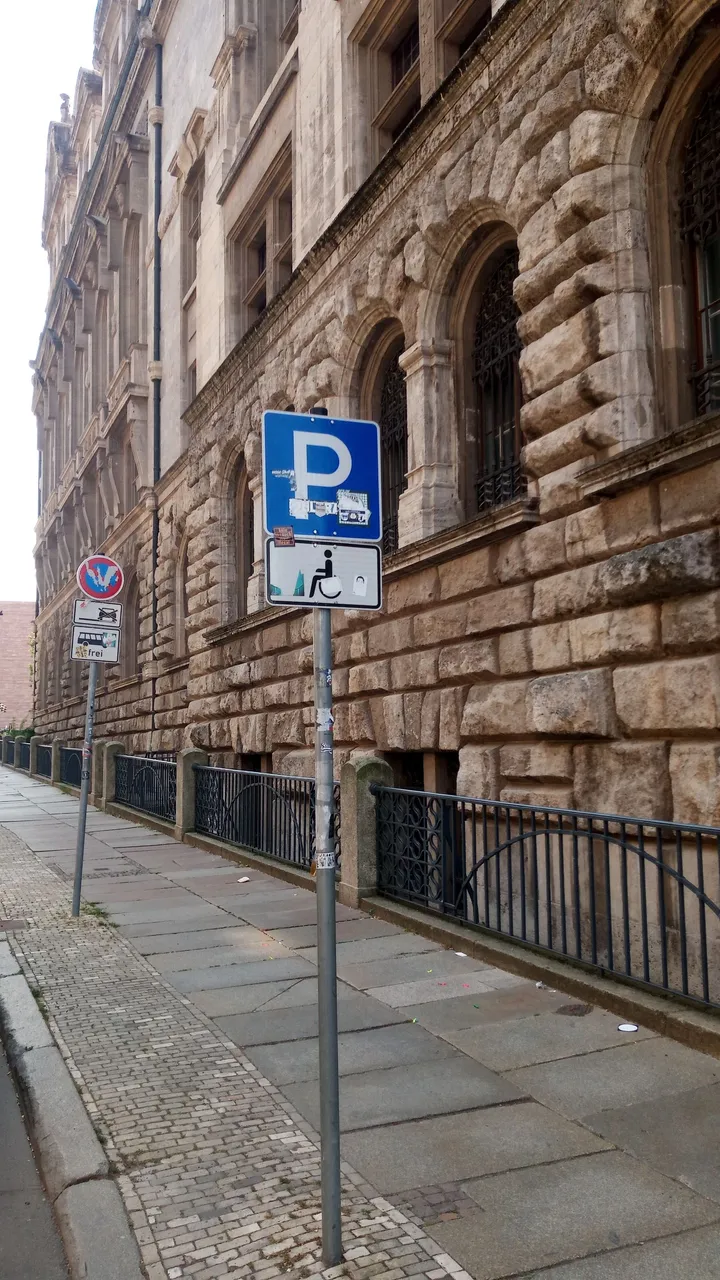
The situation is quite similar with its neighboring building, which happens to be the new town hall. They even put up a fence to keep people from falling into the ditch, which was clearly dug out to let some light enter those basement windows. If this seems a bit counterproductive to you, you are definitely not alone.
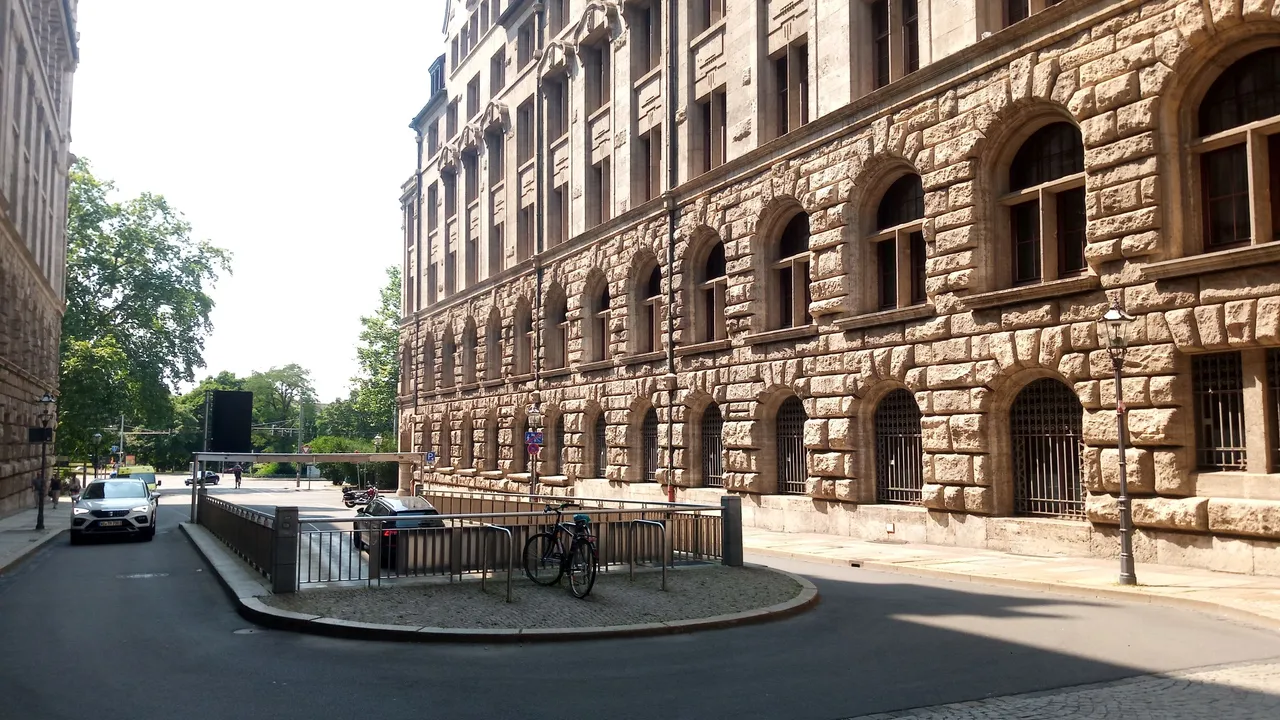
But wait, things are getting even stranger on the other side of the same building. There is a whole road leading down into the underground chambers. You could claim it's merely a garage, but keep in mind: we didn't have any automobiles over two centuries ago. Could you see horses being kept in some underground stables? No, neither can I.
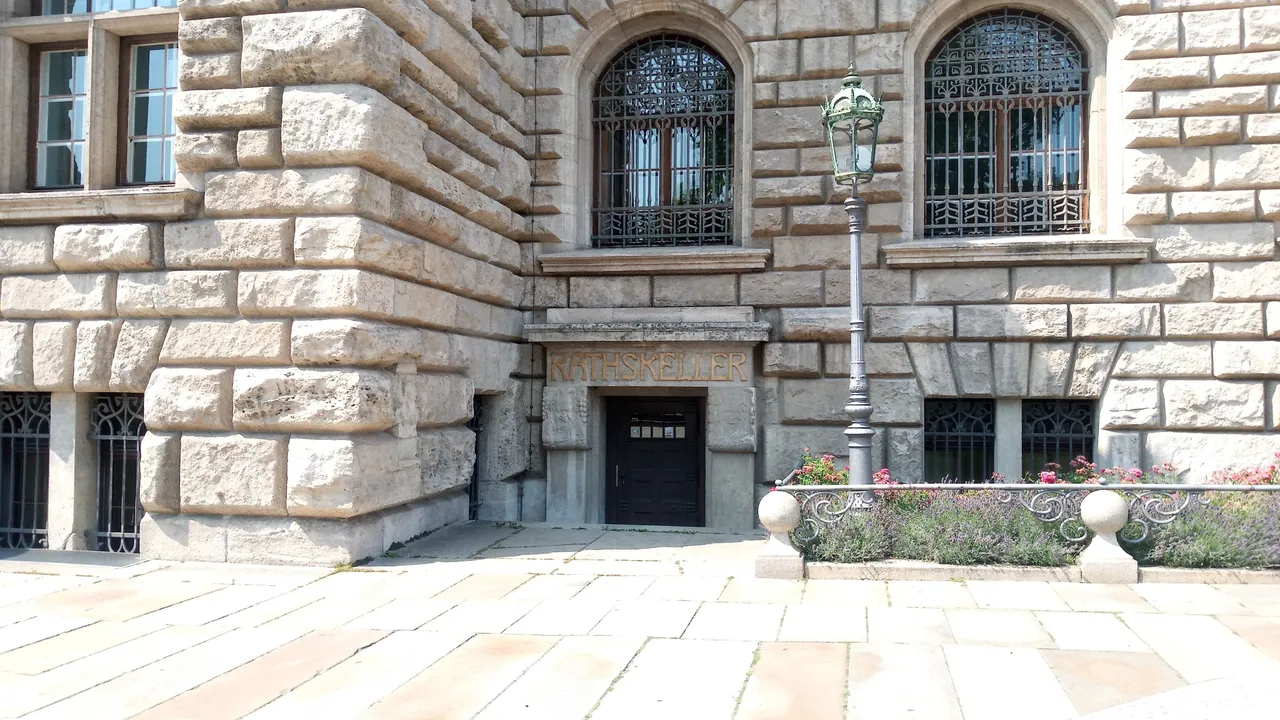
With so much evidence being hidden in plain sight, it is a bit ironic to see the lower level, half-buried floors of buildings being labeled as "cellars", for example above this door. Right, I mean, like we can't see that it's an entrance to the downstairs part... which then again, is not really that far down. As if it had never been intended to be used as a cellar, and now it has to be pointed out specifically, to make sure nobody gets the wrong idea.

... and the list goes on. Before I start repeating myself, here is another thought: What happened to the lakes, rivers, canals, and other bodies of water, if there really was a Mud Flood? Take this cute little bridge for example. Did they dig it up and place it on ground level (after the mud had displaced all the water from the lake)? It's certainly worth considering all the aspects to this interesting theory, before deciding on a side. As for me, I like to keep them out on the shelf, where I can spend more time deliberating all these interesting aspects.
So now, I would be curious to know your take on this, so please share them in the comments. I will make sure to reward each one in one way or another.